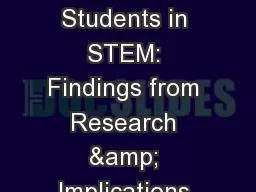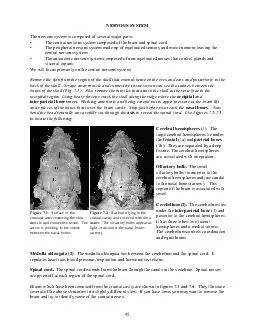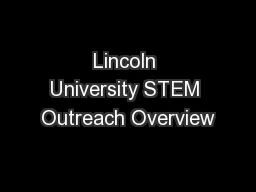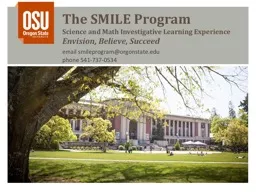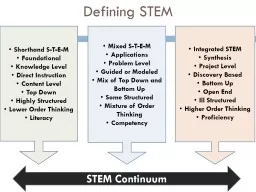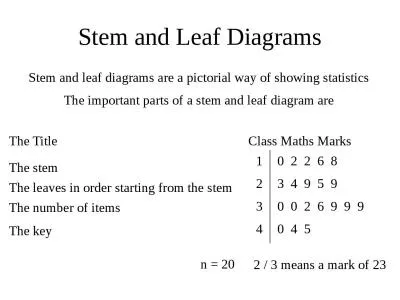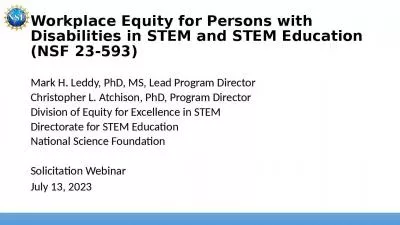PPT-Trajectories of Underrepresented Students in STEM: Findings from Research & Implications
Author : tawny-fly | Published Date : 2018-11-03
Tanya Figueroa Gina Garcia Bryce Hughes Sylvia Hurtado AACU 2012 Purpose of this Session Gain an understanding of the unique experiences of students of color
Presentation Embed Code
Download Presentation
Download Presentation The PPT/PDF document "Trajectories of Underrepresented Student..." is the property of its rightful owner. Permission is granted to download and print the materials on this website for personal, non-commercial use only, and to display it on your personal computer provided you do not modify the materials and that you retain all copyright notices contained in the materials. By downloading content from our website, you accept the terms of this agreement.
Trajectories of Underrepresented Students in STEM: Findings from Research & Implications: Transcript
Download Rules Of Document
"Trajectories of Underrepresented Students in STEM: Findings from Research & Implications"The content belongs to its owner. You may download and print it for personal use, without modification, and keep all copyright notices. By downloading, you agree to these terms.
Related Documents

